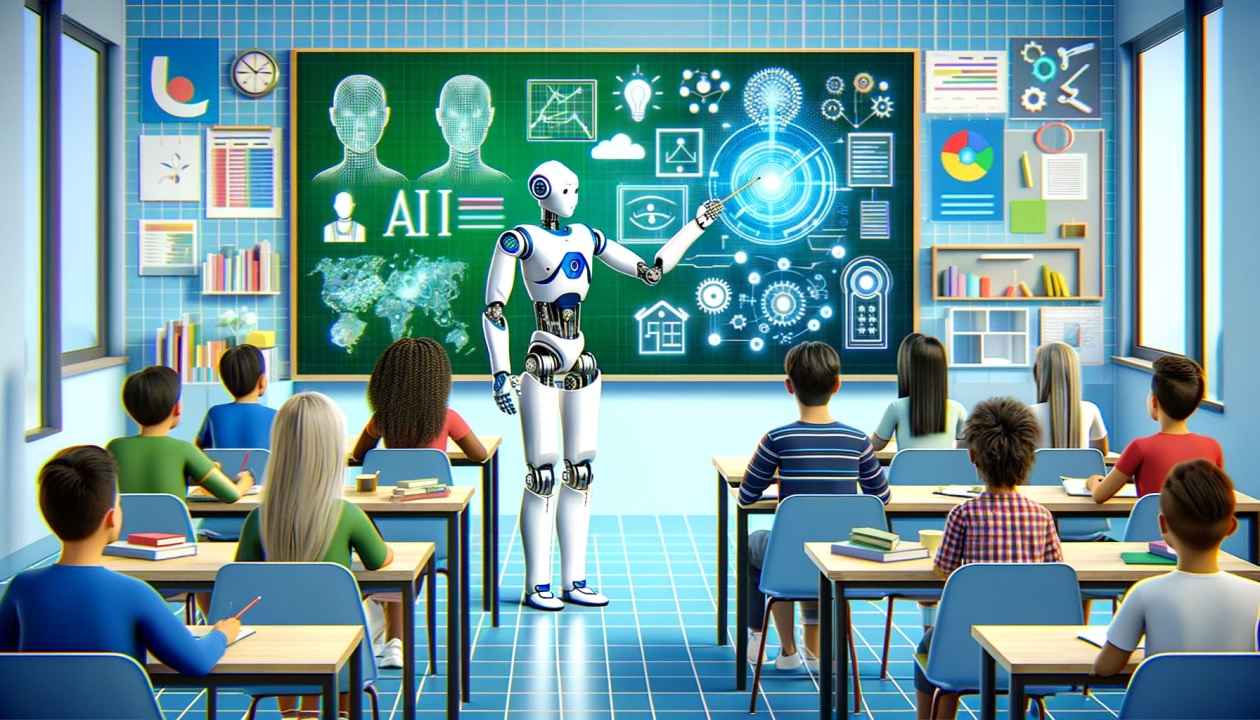Imagine a classroom where the teacher never forgets a student’s name, tailors lessons to each kid’s learning style, and grades papers faster than you can say “pop quiz.” Sounds like a dream, right? Well, pinch yourself, because artificial intelligence (AI) is sneaking into modern classrooms and turning this dream into reality. From interactive apps to virtual tutors, AI is reshaping how students learn and teachers teach. But it’s not all smooth sailing—there are bumps along the way, and no, I’m not talking about those braided crib bumpers from baby bedding sets! Let’s dive into the hidden impact of AI on education, with a sprinkle of humor to keep things light.
AI: The New Teacher’s Pet
Gone are the days when the classroom was just chalkboards, textbooks, and the occasional overhead projector that always seemed to jam. AI is stepping in as the ultimate teacher’s assistant, minus the coffee runs. AI-powered tools like adaptive learning platforms analyze how students learn and adjust lessons in real time. For example, platforms like DreamBox or Khan Academy use AI to figure out if little Timmy struggles with fractions and then serve up extra practice problems tailored just for him. It’s like having a personal tutor who never gets tired or cranky.
But it’s not just about math drills. AI is making learning fun. Apps like Duolingo use gamification to teach languages, rewarding students with virtual badges for mastering verb conjugations. It’s so engaging that kids might forget they’re learning—until they’re fluently ordering tacos in Spanish. And let’s be honest, who wouldn’t want to learn French if it meant earning a digital crown for conjugating avoir correctly?
Personalizing Education Like Never Before
One of AI’s biggest wins is its ability to personalize learning. Every student is different—some zoom through algebra like it’s a race, while others need a bit more time to grasp the concept of variables. AI steps in to create customized learning paths. It’s like giving every student their own GPS for navigating the wild jungle of education.
Take Google Classroom integrated with AI tools, for instance. It can track a student’s progress, suggest resources, and even predict when they might need extra help. This means shy students who might not raise their hands get the support they need without feeling singled out. And for teachers? It’s a game-changer. Instead of spending hours grading quizzes, AI tools like Gradescope can grade assignments in a snap, leaving teachers more time to, you know, actually teach—or maybe sneak in a quick coffee break.
But here’s the funny part: AI is so good at personalizing learning that it might know your kid better than you do. “Sorry, Mom, AI says I need to practice geometry, not play video games.” Ouch.
Streamlining the Boring Stuff
Let’s face it—teaching involves a lot of paperwork that makes even the most enthusiastic educators want to hide under their desks. Lesson planning, grading, attendance tracking—it’s enough to make anyone dream of a simpler life, like selling braided crib bumpers online. Enter AI, the ultimate paperwork slayer. Tools like Microsoft Teams for Education use AI to automate repetitive tasks, like organizing schedules or generating progress reports. This frees up teachers to focus on what they do best: inspiring young minds.
AI also helps with classroom management. Tools like Classcraft use AI to gamify behavior tracking, rewarding students for good habits like turning in homework on time. It’s like turning the classroom into a giant board game, minus the part where someone flips the table because they landed on “detention.”
Engaging Students in New Ways
Remember the days when “interactive learning” meant passing around a grainy VHS tape? AI has taken engagement to a whole new level. Virtual reality (VR) and augmented reality (AR) powered by AI are bringing lessons to life. Imagine students dissecting a virtual frog or exploring the pyramids of Egypt without leaving their desks. Tools like Google Expeditions let students take virtual field trips, making history and science as exciting as a Netflix binge.
And then there’s AI-driven chatbots—not the kind that annoy you on customer service websites, but the ones that act as 24/7 study buddies. Platforms like Socratic by Google let students ask questions and get instant explanations, complete with diagrams and videos. It’s like having a super-smart friend who’s always awake, even at 2 a.m. before a big test.
But here’s a funny line for you: If AI chatbots get any smarter, they might start assigning us homework. “Grok, I just wanted help with algebra, not a 500-word essay on the history of pi!”
The Challenges: AI Isn’t Perfect (Yet)
Now, let’s not get too carried away. AI in classrooms isn’t all rainbows and gold stars. There are some real challenges to consider. For starters, not every school has the budget for fancy AI tools. While some districts are decked out with the latest tech, others are still using computers that take 10 minutes to boot up. This digital divide means not every student gets to benefit from AI’s magic.
Then there’s the issue of data privacy. AI tools collect a ton of data to personalize learning—think test scores, learning habits, and even how long it takes a student to answer a question. If that data falls into the wrong hands, it’s a bigger problem than forgetting your lines in the school play. Schools need to ensure they’re using secure platforms that comply with laws like FERPA to protect student information.
And let’s not forget the human element. AI can’t replace the warmth, creativity, and encouragement of a great teacher. Sure, it can grade papers and suggest lessons, but it can’t give a high-five or tell a cheesy joke to lighten the mood (well, maybe it can, but it’s not quite the same).
The Future: AI and Teachers Team Up
So, what’s next for AI in classrooms? The future looks bright—and a little sci-fi. Picture AI-powered holographic tutors explaining quantum physics or predictive analytics helping schools identify students at risk of falling behind before it happens. Researchers at Stanford University are already exploring how AI can enhance education, from improving literacy to supporting students with special needs.
But the real magic happens when AI and teachers work together. AI isn’t here to steal anyone’s job—it’s more like a trusty sidekick, like Robin to Batman or a really smart Roomba to a messy house. Teachers can use AI to handle the grunt work, leaving them free to mentor, inspire, and maybe even sneak in a few dad jokes.
A Touch of Humor: AI’s Classroom Takeover?
Okay, let’s lighten things up. Imagine a classroom where AI takes over completely. The whiteboard is replaced by a giant touchscreen, the teacher is a hologram, and the lunch menu is optimized by an algorithm to maximize “student happiness.” Sounds cool, until the AI decides everyone’s eating kale smoothies for lunch. Hard pass.
In all seriousness, AI’s role is to enhance, not dominate. It’s about making learning more accessible, engaging, and tailored to each student’s needs. Whether it’s helping a struggling reader catch up or challenging a math whiz with advanced problems, AI is quietly revolutionizing classrooms in ways we’re only beginning to understand.
Wrapping It Up
AI is transforming modern classrooms in ways that would make even the most futuristic sci-fi writer jealous. From personalized learning to streamlined tasks and interactive tools, it’s helping students and teachers alike. Sure, there are challenges—like cost, privacy, and ensuring AI doesn’t turn into an overzealous substitute teacher—but the benefits are undeniable.
So, the next time you hear about AI in education, don’t picture a robot grading papers in a cold, sterile classroom. Instead, imagine a tool that helps every student shine, makes teachers’ lives easier, and maybe even sneaks in a little fun along the way. After all, if AI can make learning as cozy and safe as a baby bedding set, it’s doing something right.






